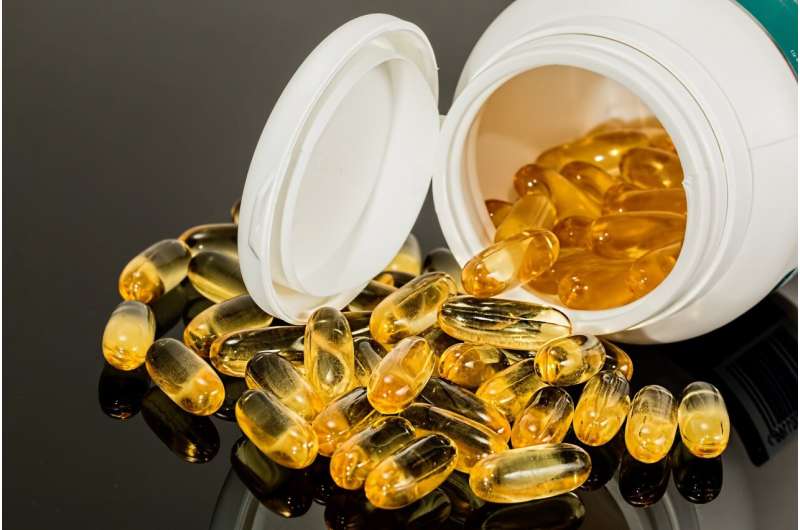
Patients with acute myeloid leukemia (AML) who received vitamin C and D supplements while undergoing intensive chemotherapy had lower rates of complications, such as infections, bleeding, and inflammation, when compared with similar, previously treated patients who did not receive these supplements.
Moreover, while the study showed no difference in survival between the two groups, a subgroup analysis showed that among patients with a genetic mutation known as NPM1—found in about one in three patients with AML—the risk of death was nearly 50% lower among those who were taking the supplements. The results have been published in the journal Blood Advances.
“To the best of our knowledge, this is the first study to examine the potential effects of vitamin C and D supplementation during intensive chemotherapy for AML,” said Christian Récher, MD, of the University Cancer Institute of Toulouse in France and the study’s senior author. “We have shown that supplementation is feasible and safe and may help reduce some significant adverse events associated with intensive chemotherapy, which is a clear benefit for patients.”
Dr. Récher and his colleagues began treating all adult patients with AML undergoing intensive chemotherapy with vitamin C and D supplements, based on the findings of several previous studies. One of these studies suggested that higher vitamin D levels prior to a donor stem cell transplant reduced the risk of a post-transplant relapse in patients with AML, while two laboratory studies indicated that vitamin C supplementation could suppress the development of leukemic cells.
In this study, the researchers compared outcomes for 431 patients with AML who received intensive chemotherapy at the University Cancer Institute of Toulouse over a five-year period; 169 patients, treated between 2018 and 2020, received vitamin C and D supplements while 262, treated between 2015 and 2018 (the control group), did not.
The median age of patients in the supplementation group was 65 and 52% were women, while in the control group, the median age was 60 and 53% were men. At the time of their AML diagnosis, most patients in both groups had low levels of vitamins C and D.
Roughly a quarter of patients in the supplementation group and a third of those in the control group went on to receive donor stem cell transplants. The median follow-up period was 28.7 months for the supplementation group and 58.2 months for the control group.
In the supplementation group, vitamin D levels increased significantly from 18 ng/mL at diagnosis to 39 ng/mL at recovery from intensive chemotherapy. The normal range for vitamin D is between 20 and 50 ng/mL No significant increase was seen in vitamin C levels likely due to a conservative regimen (6 grams per week).
During intensive chemotherapy, patients receiving the supplementation experienced lower rates of moderate to severe bacterial infections (27.2% versus 35.1% in the control), bleeding (1.8% versus 5.7% in the control), and potentially life-threatening inflammation of the immune system (1.8% versus 8.8% in the control).
Median overall survival was 34.5 months, median survival without a relapse was 20.6 months, and the cumulative incidence of relapse was 46.4%. No significant differences between the two groups were observed when the researchers analyzed outcomes for all treated patients combined.
However, a subgroup analysis found that patients in the supplementation group with an NPM1 mutation—the most common mutation found in 30% to 35% of patients with AML—had a 48% reduced risk of death compared with patients who did not have the mutation. Further studies are needed to identify the mechanism responsible for this survival difference, Dr. Récher said.
Dr. Récher and his team were especially surprised by the improved survival in patients with an NPM1 mutation who received the supplements but cautioned that this association requires confirmation in a larger, randomized study.
The study has several limitations. It was a retrospective study conducted at a single institution that compared outcomes for patients treated before and after the institution introduced supplementation for all adult patients undergoing intensive chemotherapy for AML. The study also involved a relatively small number of patients. Additionally, because all patients in the supplementation group received both vitamin C and vitamin D, the researchers could not analyze the independent effect of each vitamin or the value of combining them.
Despite these limitations, Dr. Récher said, “Our results are encouraging and support prospective clinical trials of vitamin C and D administration in AML patients.”
Journal information:
Blood Advances
Source: Read Full Article
